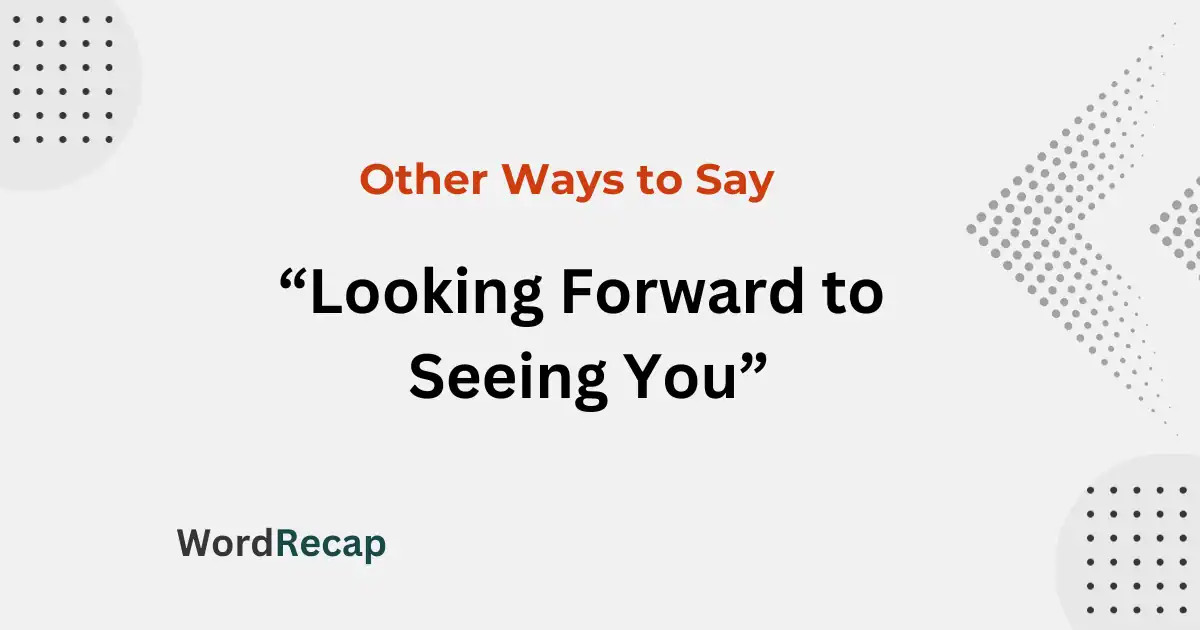Other Ways to Say “Looking Forward to Seeing You”

Preparing to meet someone brings a mix of excitement and anticipation. If you’re tired of the regular “Looking Forward to Seeing You,” explore 20 creative alternatives here. Whether for a friendly gathering or formal meeting, this list offers diverse expressions to convey eagerness. Say goodbye to routine and embrace new phrases for different situations. Join us on this language adventure to enhance your communication with vibrant and simple expressions.
Other Ways to Say “Looking Forward to Seeing You”
- Excited to meet you.
- Can’t wait to see you.
- Anxiously awaiting our meeting.
- Ready for our upcoming encounter.
- Thrilled about our get-together.
- Anticipating our meeting eagerly.
- Prepared for our upcoming rendezvous.
- Envisioning our time together.
- Looking ahead to our meeting.
- All set for our upcoming visit.
- Ready and thrilled for our meetup.
- Imagining our gathering.
- Thinking about our rendezvous.
- Can’t wait to be with you.
- Prepared for our upcoming connection.
- Enthusiastically awaiting our meetup.
- Counting down the moments until we meet.
- Waiting for our visit with excitement.
- Anxiously looking forward to our encounter.
- Hoping for a wonderful time together.
The phrase “Looking Forward to Seeing You” is grammatically correct and Formal in contexts. It is used in professional or polite settings to express anticipation and politeness when meeting someone.
It’s suitable for various situations, such as business meetings, social gatherings, or formal events. While it’s a polite and common expression, using alternatives can add variety and freshness to your communication.
A professional alternative could be: “Anticipating our meeting.”
An informal expression of excitement could be: “Can’t wait to catch up!”
For example, you can say, "Excited to meet you" or "Can't wait to see you," depending on the tone and context of your message.
